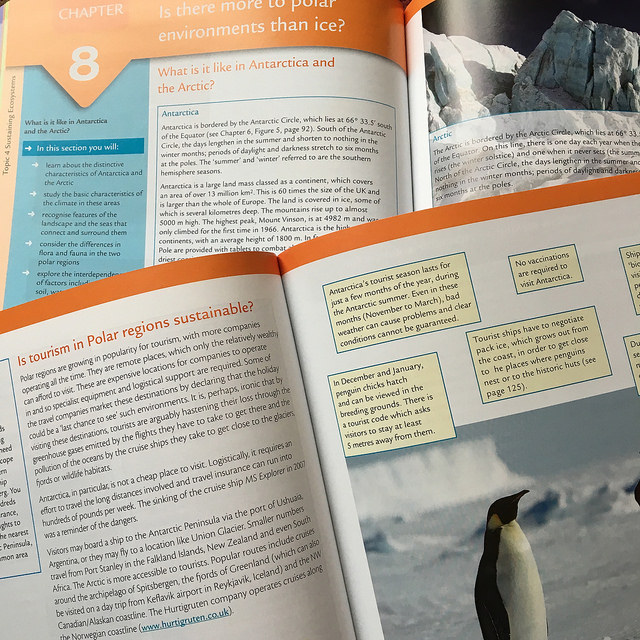Earlier this week, I received a preview
copy of the latest book by Danny Dorling and Carl Lee.
The book is called ‘Geography’.
Published by Profile books, this is the
latest in a series of books which explore topics, in a similar (but completely
different) style to the successful ‘Very Short Introduction’ series, and have
previously explored ‘Politics’ and ‘Social Theory’ for example.
Geography is of course impossible to pin
down easily in one small book, as it has an ambition which is ‘absurdly vast’,
as Alastair Bonnett said in his own book on the subject, but Danny and Carl
give it a good go.
The introduction sets the scene for the
story to come, exploring the rapidly changing world which geographers try to
explore, and tell the story of through their work. In my teaching, I am always
looking for the compelling narrative that will draw learners in, and provide
opportunities for them to reach their own informed conclusions.
The first chapter in the book: ‘Tradition’
explores the development of geographical thinking, and introduces some of the key
ideas that lie behind the subject, and provide the distinctive nature of what
it means to use a ‘geographical lens’ to examine the world. It takes the reader
on interesting diversions to Damascus, DNA trails, the contested introduction
of the term ‘Anthropocene’, Potosí, Sir Joseph Banks and the sad decline of
British coal mining.
Geographical
questions are never stand-alone. All the questions we ask lead to other
questions. Often the answers are elusive. Geography is about joining up the
dots that help make up the big picture. Connections are everywhere. The
distinction between human and physical geography is often a false schism: they
are intimately connected, the unifying factor being the energy that flows
through all that we do, see and know.
The book is structured around a series of
chapters exploring some key geographical ideas which, when connected, help to
explain a lot of the world’s functioning.
Globalisation, Equality and Sustainability
are these three big ideas, and there are plenty of brief vignettes to help
illustrate each of them in the chapters that follow. These provide food for
thought, and prompts for investigations with students (this would be a perfect
summer reading book for those about to embark on a course of geographical study
– perhaps Year 11s who are about to start one of the new ‘A’ level
specifications in September).
There are some similarities in themes to
Carl’s previous book ‘Everything is connected to everything else’, which was
arguably even more ambitious and sprawling, and is available online here. (I recommend you check out the website if you haven't already seen it)
The book ends with a chapter called
‘Mapping the future’, which connects with one of the other strengths of
geography. It is a subject which connects with the future, as well the past and
present. It explores themes of environmental protection, global population
growth and other challenges (and opportunities) facing the planet.
Thanks to Carl for sending me a copy in
advance. It was a swift and enjoyable read, which opened up some nice avenues
to explore further, and I’ve passed it on to my colleague to enjoy. Definitely one for the geography library for your department, or for your shelves at home.
 ESRI have been working to produce a StoryMap, using the Cascade template, which has been designed to go along with the new book by RGS President Nicholas Crane.
ESRI have been working to produce a StoryMap, using the Cascade template, which has been designed to go along with the new book by RGS President Nicholas Crane.












